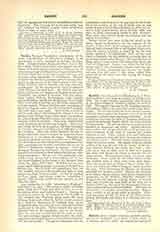

Gamier, JULIEN, Jesuit missionary, b. at Connerai, France, January 6, 1643; d. in Quebec, 1730. He entered the Society of Jesus in 1660, and, in October, 1662, sailed for Canada. He was the first Jesuit to be ordained there, and after his ordination in 1668, he prepared himself for missionary work among the Indians. He went first to the Oneida, but within a few months changed the field of his labors to the Onondaga mission. Garaconthie, the Onondaga chief, received him with every evidence of friendship, and, at his request, rebuilt the chapel of St. Mary. So successful was his ministry among the Onondagas, that, on the arrival of other missionaries in 1671, Garnier set out with Father Fremin for the Seneca country, where he found a bare handful of Christian Indians at the Gandachioragou mission. He immediately began to preach and baptize, and persevered in his work even after his chapel was destroyed by a fire which wiped out the entire village.
When trouble arose in 1683 between the French and the Senecas, Garnier went with de Lamberville to Governor de la Barre to urge compromise and moderation. He was unable, however, to dissuade the latter from his policy of repression, and de la Barre set out upon the ill-starred expedition which was to prevent priests from venturing among the northern tribes for over thirteen years. Every missionary was recalled at the outbreak of hostilities and Garnier was sent in turn to the settlements of Lorette and Caughnawaga. His adventurous spirit, naturally, chafed under the inactivity of these more tranquil labors, and when access to the Indians was made possible by the Treaty of Montreal, in 1701, Father Garnier hastened back to his mission among the Senecas, where he remained till 1709, when Schuyler’s expedition once more made it necessary for him to return to Canada. His departure marked the end of missionary work among the Senecas, and he passed his remaining years among the various settlements along the St. Lawrence, retiring from active life in 1728.
Both his extraordinary missionary zeal and the length of time over which his labors extended have marked Father Garnier as the Apostle of the Senecas. His intimacy with this tribe was much more close than that of any other of the early Jesuits, and the notes and letters he has left still remain one of the principal and most accurate sources of information on this division of the Iroquois.
STANLEY J. QUINN.

